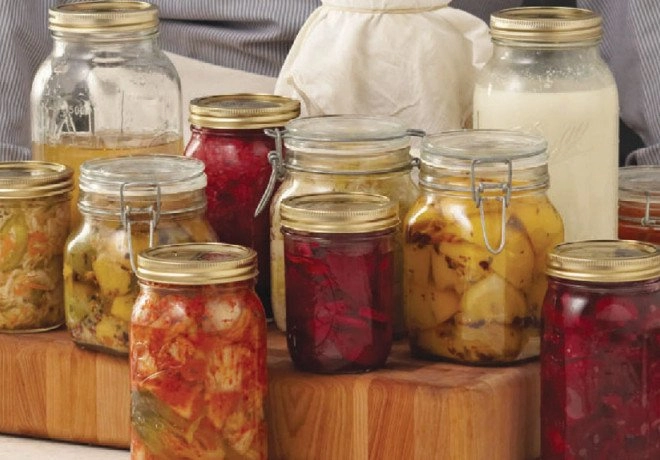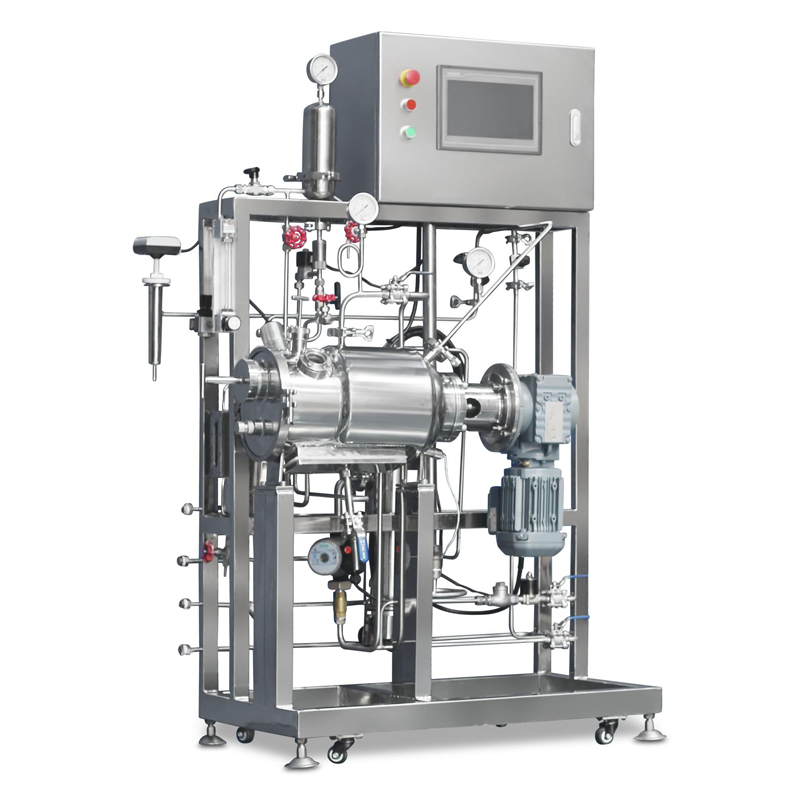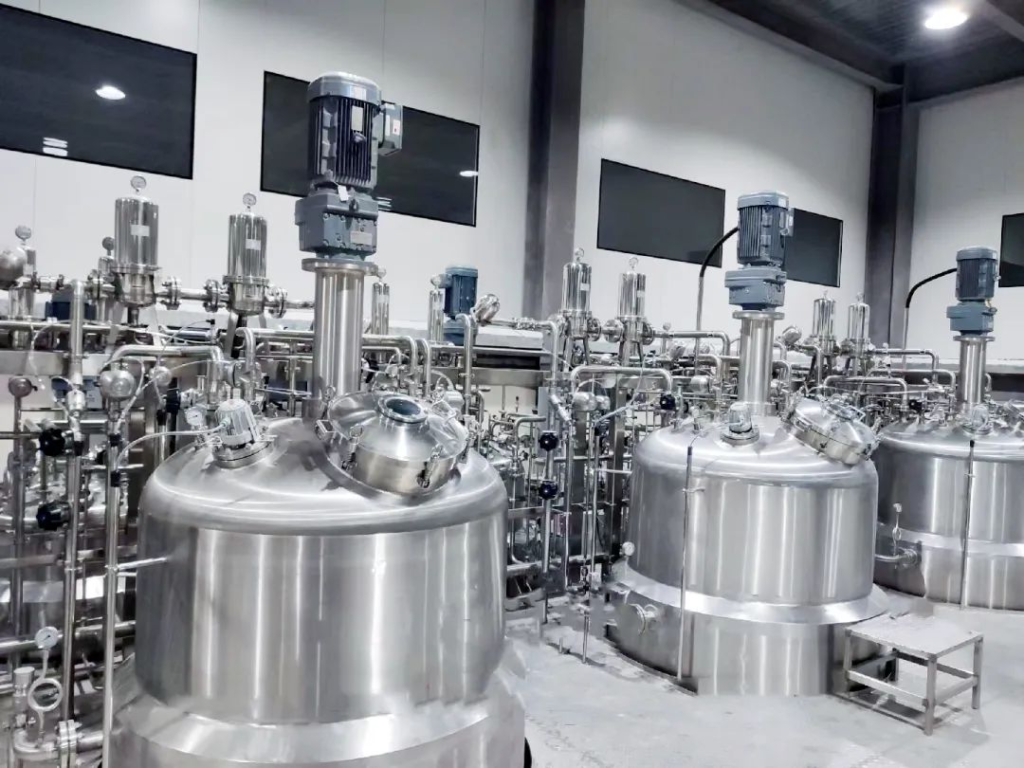
There are several kinds of fermentation which vary in many ways, including equipment, science, and bacteria involved.
In this article, we are going to explain in detail the 8 major types of fermentation and their roles in various sectors. If you’re looking to make fermentation part of your daily life or incorporate it as an industrial process, this guide is for you.
What is Fermentation?
Fermentation was originally employed centuries ago in the food industry, largely to preserve foods and produce alcoholic beverages and other treats. It is an anaerobic scientific process through which microorganisms such as yeast and bacteria decompose organic substrates such as carbohydrates into simpler compounds. This leads to energy formation in the form of adenosine triphosphate(ATP).
The Science Behind Fermentation
To initiate fermentation, you must introduce microorganisms, such as bacteria or yeast, to substances
containing sugar. The microorganisms are attracted to the sugar, so they digest it, breaking down to
produce alcohol, acids, and carbon dioxide.
When it comes to the production of wine and beer, yeast is introduced into a mixture of water and either grapes or malted grain. In this process, the yeast ferments the grapes or mated grains into alcohol and carbon dioxide. The carbon dioxide gives beer and wine their characteristic bubbly nature, similar to that of fizzy drinks.
Among the main considerations during fermentation is temperature and oxygen levels. You should monitor
these closely throughout the entire process to ensure efficiency. If the temperature is too high or too low, the microorganisms may not perform their roles properly. Similarly, introducing a lot of oxygen to the process hinders its efficacy. This is because the organisms may focus on consuming all the oxygen instead of producing the desired end products.
Complete fermentation can take anywhere between a few days and several weeks. Therefore, you have to be patient and avoid rushing the process.
Types of Fermentation
The final end product of fermentation is food and drinks with enhanced nutritional value, richer flavor,
with an irresistible aroma. However, there are different types of fermentation, each with its own characteristics, uses, and results. The following are the main types of this crucial process.
1. Lactic acid fermentation
Lactic acid fermentation mostly occurs in animals and a variety of bacteria. For instance, have you ever
ever wondered how your body manages to produce enough energy even when you lack enough oxygen during strenuous exercise? It’s through lactic acid fermentation.
This type of fermentation entails the breaking down of sucrose, fructose, and other sugars into lactic acid in the absence of oxygen. While lactic acid may cause muscle fatigue after exercise or during hard work, it also has a host of benefits. For example, lactic Acid is used outside the human body in the preservation of yogurt and sauerkraut. It is also an important ingredient in the manufacture of fermented-milk products, such as kefir and several types of cheese.

In microorganisms that perform this type of fermentation, it’s a means of producing energy they need in
their metabolism. Moreover, by synthesizing lactic acid, they reduce the pH of their environment, making it acidic enough to prevent the growth of competing bacteria.
Lactic acid fermentation is an extremely popular choice for commercial use. This may be explained by its role in the production of fermented drinks and delicacies like kimchi, sourdough bread, sauerkraut, yogurt, and cheese.
2. Alcohol fermentation
Yeasts and bacteria play a crucial role in fermentation. When they disintegrate sugars to release carbon
carbon dioxide and ethanol, this process is known as alcoholic fermentation and takes place in two easy steps.
First, the microorganisms convert either glucose or fructose into two molecules of pyruvate. Then, the pyruvate molecules, through the action of alcohol dehydrogenase, convert these molecules into ethanol and carbon dioxide.

Alcohol fermentation happens within the cytoplasm and can be enhanced by introducing an agent known as Saccharomyces cerevisiae. This is a yeast species that dominates during juice and fruit fermentation.
Moreover, alcohol fermentation kicks off due to selective awareness, which allows it to work best in anaerobic conditions. The end products of alcohol fermentation are ethanol and carbon dioxide. After the process, the microorganisms’ cells diffuse these end products out of their bodies together with other sub-products such as esters, succinic acid, diacetyl, and acetic acid.
3. Acetic acid fermentation
Acetic acid fermentation is another common type of fermentation which is classified in the anaerobic category. It mainly involves a complex process in which starch, grains, and fruits naturally ferment into sour vinegar and other condiments.
Acetic acid bacteria(AAB), a group of gram-negative bacteria, are the main players in this type of fermentation. They exclusively oxidize sugars or ethanol during fermentation to produce acetic acid. These bacteria are mainly found in acidic, sugary, or alcoholic settings such as flowers, fruits, and fermented beverages.

Given the right amount of oxygen, AAB can effectively produce vinegar from alcohol. And while they are considered spoilage organisms, they also play a crucial role in the manufacture of foods such as kombucha and cocoa powder.
Whether it is produced through submerged or surface fermentation methods, vinegar should contain 5% to 18% acetic acid, just enough to balance flavors and enhance the taste of various dishes. Moreover, due to its acidic properties, vinegar produced through acetic acid fermentation is also used as a natural option in pickling. It creates a harmful environment for harmful bacteria to preserve pickle foods such as carrots, cauliflower, peaches and onions.
Other uses of acetic acid include the preparation of perfumes, treating outer ear infections caused by fungus, and as a binding agent in the rubber industry.
4. Propionic acid fermentation
Most people know propionic acid as a liquid with an unpleasant smell resembling body odor. However, it is also a major ingredient in the large-scale production of swiss cheese.
Like in standard fermentation processes, propionic acid fermentation involves exposing bacteria to saccharides such as glucose, which they break down into pyruvate through glycolysis. With a few reduction steps in the Wood-Werkman cycle, the pyruvate is then broken down into propionic acid. Apart from propionic acid, other end products of this type of fermentation include carbon dioxide, succinic acid, and acetic acid.
Although propionic acid fermentation is not as cost-effective, scientists have explored alternative options, such as relying on microbes to produce propionic acid commercially.
Propionic acid has the ability to inhibit fungal and bacterial growth. Therefore, besides being used in the production of swiss cheese due to its unique flavor profile, it is one of the best preservatives in the food production industry.
5. Butyric acid fermentation
Like propionic acid, butyric acid is a carboxylic acid found in natural sources such as fermented foods, butter, and cheese. Butyric acid fermentation involves various microorganisms breaking down these naturally occurring compounds into butyric acid.
Among the key orchestrators of this type of fermentation is clostridium, which is mainly found in animal intestines and soil. This bacteria has adapted to living in various habitats and contains the unique ability to break down even the most complex organic compounds to produce butyric acid.
During the fermentation process, clostridium breaks down organic substances, such as butter into amino acids and simple sugars. This is the first and most important step, as it paves way for a more streamlined process onwards. The microorganisms regulate the subsequent reactions to ultimately form butyric acid.
Some of the conditions necessary for butyric acid fermentation include;
- Anaerobic setting – An oxygen-free environment is crucial. This is because oxygen is known to inhibit the growth and activity of microorganisms, making them unable to perform their roles in the fermentation process.
- pH range – The microorganisms that facilitate butyric acid fermentation require a certain pH for them to thrive. This is usually between 5.5 and 7.5. To regulate this pH, you can consider using specialized fermentation chambers.
- Temperature – The recommended temperature for butyric acid fermentation is between 30 and 40 degrees celsius. Anything higher than that could result in poor-quality end products.
Apart from its well-documented health benefits, butyric acid fermentation is also crucial to environmental sustainability as it converts organic waste into butyric acid.
6. Solid-state fermentation
Solid state fermentation is a fermentation process that entails growing of microbes without free water. It is a one-of-a-kind type of fermentation that utilizes a solid medium as opposed to most types of fermentation, which occur in liquid settings.

The most commonly used substrates for the solid-state fermentation process include grains, straws, sawdust, and wheat bran. Most of these are readily available and insoluble materials, but they contain a consistent source of nutrients for the growth of microorganisms, which is crucial for any fermentation process.
In solid state fermentation, the microbiological components come in the form of single cultures or indigenous microorganisms. While bacteria and yeasts are also possible requirements, they may require more liquid settings to perform their roles effectively, so they may produce lower and low-quality leads. Here are some of the steps involved in this type of fermentation:
- Treatment of raw materials chemically or mechanically to reduce their size and expose nutrients for easier reactions.
- Substrates such as proteins are hydrolyzed and the products of hydrolysis fermented.
- Separation and purification of end products.
Solid state fermentation has not been around for long, but it has been proven to be effective in producing microbial products such as fuel, food, and medical products. It is a type of industrial fermentation that plays a crucial role in various bioprocesses, releasing the least possible amount of waste to the environment.
7. Batch fermentation
Sometimes, microbial cells grow and multiply before converting raw substrates such as carbohydrates into finished products such as carbon dioxide and ethanol. This fermentation process is carried out in a stirred tank fermentor, making it a closed culture system.

This type of fermentation involves microbial cells fermenting the raw materials into the desired outcomes within a definite period and set conditions. These conditions are determined according to various factors, including;
- Environmental conditions such as temperature and pH
- The types of raw materials you consider using
- The desired end products
During batch fermentation, the microorganisms’ cells undergo constant multiplication and growth. This increases the involved microorganisms and facilitates fermentation for the specified period of time until they completely exhaust the nutrients.
In the stirred tank fermentor, the aerator regulates the amount of oxygen entering the fermentation chambers. The temperature also needs to be kept steady and anti-foaming agents need to be on stand-by to break the froth once it is formed inside the bioreactor.
A batch fermentation set up is easy to install and run. Furthermore, due to its closed system, it leaves almost zero chances of contamination.
8. Mixed acid fermentation
Mixed acid fermentation differs from all other fermentation processes. As its name suggests, it utilizes the capabilities of certain types of microorganisms to produce an end product of organic acid combinations. In this case, glucose is usually the main raw material and the products may range from lactic acid, acetic acid, and formic acid.
The primary player in this fermentation process is Escherichia coli, a bacteria mostly found in the intestines of healthy people and animals. Here’s the step by step guide to the process.
- The bacteria take up glucose from the environment. If it’s a closed fermentation process, the microorganisms break down sugars from provided sources.
- Through a series of reactions, the bacteria cells break down glucose into pyruvate through glycolysis.
- The pyruvate then undergoes additional enzymatic reactions to produce a range of natural acids.
- The cells then release the acids and other byproducts, such as carbon dioxide and ethanol into the environment. These end products are taken up by living organisms for various purposes.
Throughout the process, the microorganisms release energy in the form of adenosine triphosphate.
Mixed acid fermentation is one of the most versatile types of fermentation. Therefore, it is used for various purposes in the food industry, including, production of vinegar, sauerkraut, yogurt, and pickles.
Takeaway
Fermentation is simply a biochemical process that involves breaking down carbohydrates and extracting energy out of them, in the absence of oxygen. There are many types of fermentation, and understanding all of them is crucial. Every type of fermentation has various uses, benefits, and disadvantages, so understanding the differences between these types will enable you to choose the right fermentation process to fulfill your needs.
Bailun Technology to the Rescue!
Are you looking to explore or commercialize fermentation? Then you’re in the right place. At Bailun technology, we provide you with versatile and high-quality fermentation equipment, ranging from simple airlift fermenters to the more complex 100-liter union of the stainless steel fermenter.
And not just that, we have additional perks, such as timely deliveries and installations for all your fermenter needs. Moreover, we have numerous resources, ranging from informative guides to trending industry news to keep you in the know. Reach out to us today and boost your production with our top of the range products and services!

